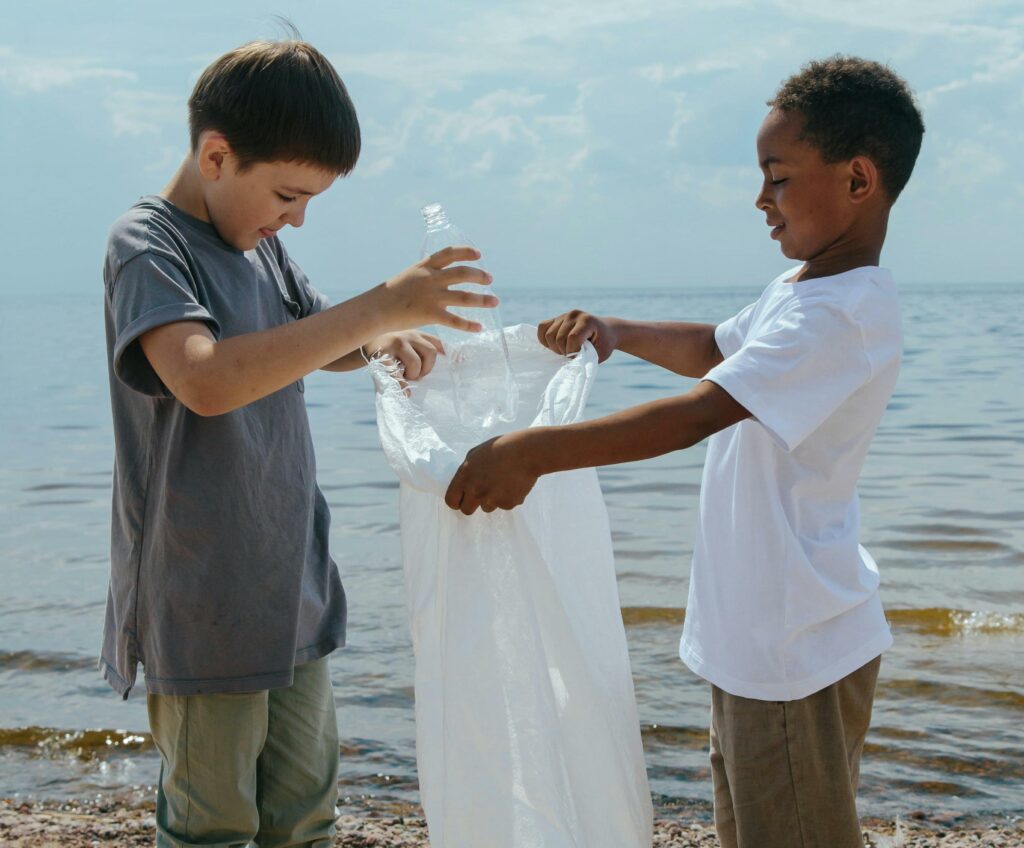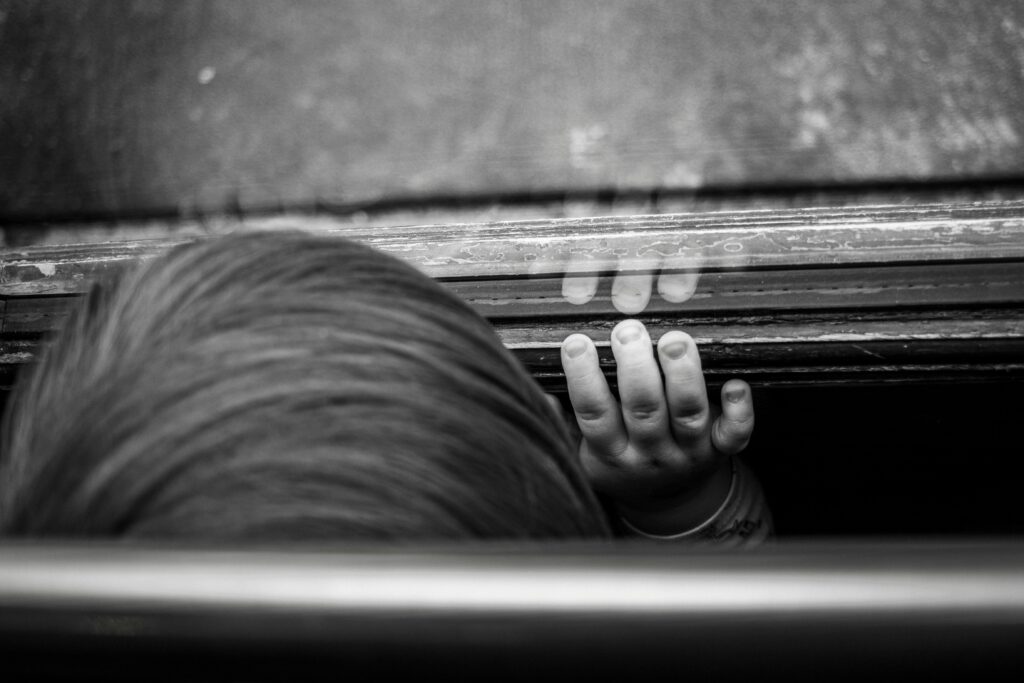Dogs can be great companions for kids, however, it’s important to teach kids how to interact safely with dogs to prevent injuries.
Dogs are the most common pet in the country for a reason. They are loyal, lovable, and form strong bonds with humans that make them incredible family pets. They’ve been shown to relieve stress and anxiety, and they can even increase your own lifespan.
However, all dogs, regardless of breed or size, have the potential to bite. A recent study found that a majority of dog bites happen within a child’s own home by their own pet dog. Dog bites are one of the most common non-fatal emergency room visits for children, especially children nine years and under. Children under age 6 often have more severe injuries and are more commonly bitten on their head, neck and face. Older kids and teens are typically bitten on their arms and hands.
Whether or not you have a dog at home, it’s important that you teach your child how to respect and behave around dogs.
Safety Tips for Dogs You Don’t Know
Even if you don’t have a pet dog, it’s inevitable that your child will come across dogs they don’t know. Many children find dogs irresistible, so it’s important to teach them the risks and how to behave. Especially with young children, you’ll need to reinforce these lessons every time you see a dog approaching. Here’s some tips from the American Kennel Society.
Leashed Dogs
If you come across leashed dogs on a walk with their owners, it’s likely your child will want to pet the dog. Teach your kids that not all pet dogs are friendly. Some are afraid of kids and will bite. Teach your kids to never approach a dog without asking permission from the owner.
If the owner says yes, teach your children to:
- Slowly and quietly approach the dog (never run)
- Curl your fingers into a fist with your palm facing down and allow the dog to sniff your hand.
- If the dog seems friendly, gently pet on the chest or on their back
- Never put your face in the dog’s face
Unleashed Dogs
Teach your children to never approach an unleashed dog, whether they are attended by an owner or not because you can’t be sure if the dog is friendly or not.
If they see an unattended dog approaching from far away, teach your children to calmly walk away—never run. Go inside or if they are out in the open, stand behind a bush, car, or tree to put something between them and the dog.
Dogs may be triggered into attacking if your child runs, yells, or waves their arms around. So staying calm, quiet, and unthreatening is the best way to stay safe.
If the dog continues to approach, teach kids to “Be a Tree.” Stand still, fold your arms, and look down at your feet. Stay still and quiet in that position until the dog moves on. If a dog knocks them over, your child should curl in a ball and protect their head and face with their arms.
Safety Tips for Kids and Your Family Dog
If you have a pet dog, or your family often visits friends or relatives that have pet dogs, it’s important to take some safety precautions and teach your children about dog behavior and how to respect dogs.
If you are thinking about getting a dog, experts recommend waiting until your child is at least four or even six years old. Keep your child’s temperament in mind and consider if they will be capable of being calm and follow dog safety rules. Make sure that the dog you choose has been properly socialized and is friendly to kids. It’s also important to do training with your dog so they follow commands, and understand your expectations and their role in your family.
Your kids can have a loving and wonderful relationship with your pet dog by following these tips.
Safety Precautions
To set your family up for good, safe interactions with a pet dog, you need to take some precautions first.
– Never Leave a Child Unattended: Never leave a dog and a young child unattended without adult supervision. The younger the child, the more important this rule, and the more critical it is for you to supervise every interaction. Have a dog crate, a gated area, or room where you can safely put the dog when you aren’t able to supervise.
– Safe Spaces for the Dog: Designate some areas for the dog that are its safe space from the children. Kids are loud, unpredictable, and can stress out dogs. Your dog needs a quiet area where they can get a break where the children are not allowed. This can be a dog crate or a special bed in a quiet area. Teach your kids this space is for the dog only and not to touch or interact with the dog when they are in their safe space. You will likely need to teach the dog to go to this spot when you notice them being stressed by using a command like “place” to send it to its safe space.
Dog Behavior
Just like people, you can read a dog’s emotions by looking at their body and facial expressions. This concept can be harder for younger children to grasp, but it’s important to teach and continue reinforcing with kids.
- Friendly Behavior Happy, friendly dogs have a more relaxed look to them. Their bodies are loose, their mouths are closed or their tongues are hanging out. They’ll have a loose tail wag, may play bow (when the front of their body is down and their hind is up), or roll over on their belly.
- Unfriendly Behavior: A dog may bite if they feel scared, stressed or aggressive, so it’s important to look for signs of stress. Watch for growling, showing teeth, tucked tails, flattened ears or alert ears, stiff body posture or raised hackles, backing away, snapping with teeth, heavy panting or licking of its lips, or barking.
Teaching Your Child How to Interact with Dogs
You can help your child build a great relationship with your dog and keep your child safe by supervising their interactions and teaching your child how to treat their pet. Here’s some behaviors to avoid and to encourage your child to do.
What to Avoid:
- No roughhousing: Never rough house with the dog. Dogs can get overly excited and can easily scratch and bite on accident.
- Don’t pull: Teach children to never pull or tug on tails, ears, paws, or other body parts. Hurting these sensitive areas can cause a dog to bite.
- No hugs: Most dogs don’t like hugs, so teach kids they can say, “I love you,” with a pet instead of a hug.
- No face to face: Teach children not to stick their faces in the dogs face.
- No picking up the dog: This doesn’t apply to big dogs, but small dogs and especially puppies should never be picked up by children. This is both for the safety of the dog and the child.
What to Encourage:
- Gentle, calm touches: Always teach children to pet your dog gently and calmly. Teach the best places to pet a dog is on their chest, back, and belly instead of their head and face.
- Caretaking: You can include children in doggy care, including helping to feed the dog, refilling the water bowl, and giving treats for good behavior.
- Training: Involve your kids in the dog’s training so the dog learns to respect your child and to listen to them. Practicing the commands come, sit, leave it, and stay are all important commands for your child to know.
- Play: Playing fetch is a great way for your child to build a bond with a dog. Train your dog to drop the ball when they return the item and not to jump. Teach your child to never grab an item from your dog’s mouth and instead wait for them to drop it.


